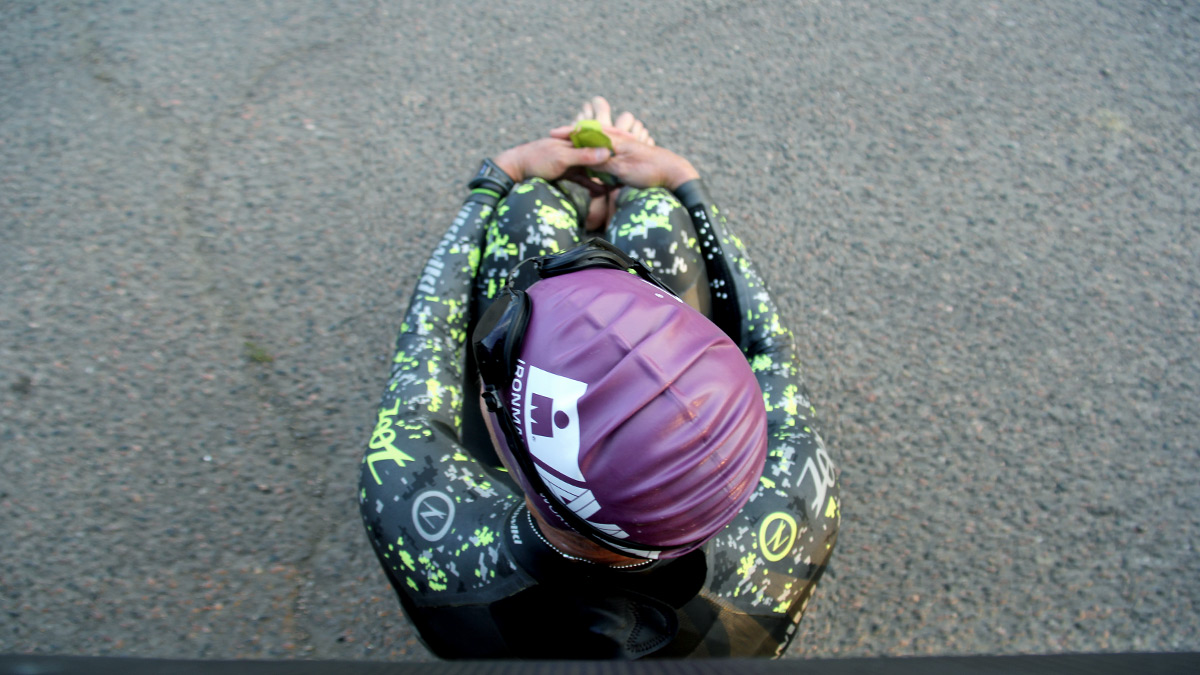Racing, particularly when you’re new to it, can be stressful. We invest so much in getting to the start line; hours of training, expensive gear, and invitations declined for early training sessions—they all raise the stakes on race day. When things go unexpectedly sideways, it’s easy for standard race stress to spiral into a full-blown fight-or-flight response. In these cases, a good coping strategy is essential to performing well.
The Hypothalamus and the Autonomic Nervous System
First, we’ll give a quick overview of what is happening in your body when you feel stress rising to anxiety. Stress releases a number of physiological responses, which are amplified if you haven’t mentally prepared for them!
When you first experience a stressful event, the amygdala, which is the area of the brain that contributes to processing your emotions, sends a message to the hypothalamus, your body’s command center. The hypothalamus basically controls involuntary body functions like the dilation of your blood vessels and the bronchioles in your lungs. Athletically speaking, this pertains to your breathing rate, blood pressure, and heart rate.
Your autonomic nervous system, comprised of the sympathetic nervous system and the parasympathetic nervous system, is in charge of other physiological responses to a stressor. The sympathetic nervous system is like an accelerator, sparking the fight-or-flight response with a burst of energy, while the parasympathetic nervous system slows you down after the stressful stimulus has passed.
What Happens When You’re Stressed
Imagine that the amygdala hollers “DANGER!” The hypothalamus receives the message, takes control and fires up the sympathetic nervous system, which in turn tells your adrenal glands to start producing adrenaline. Your heart rate increases, pumping more blood to the muscles and other vital organs. Airways to the lungs open, resulting in more oxygen traveling to the brain and making your senses sharper.
This all happens in the blink of an eye, which is why you may be able to react to a life-threatening situation instinctively, like swerving around a dangerous obstacle on your bike. While this response can initially be beneficial in a race environment, it’s not a sustainable state, especially in an endurance event. Worse, the resulting parasympathetic reaction can slow you down, ultimately taxing your system more as you try to keep racing.
Use Mental Rehearsal to Mitigate Physiological Stress Response
Mentally rehearsing is one of the best ways to preemptively reduce the risk of a fight or flight response. Taking deep breaths, repeating a calming mantra, or listening to music can help settle you down in the moment, but won’t prepare you for a curveball. If you are faced with an unexpected or frightening situation and you haven’t mentally rehearsed it, you’re risking a taxing stress reaction.
An effective way to mentally rehearse is to try to anticipate the things that might (reasonably) go wrong in your event, and then to come up with strategies for dealing with each. For example: “If I get hit in the head during the swim, how will I handle that situation?”
To start, visualize in detail what it will feel like to make contact with other swimmers and come up with some strategies for coping with subsequent stress. Consider the temperature of the water, your competitive mindset, and your level of exertion. To cope, you might focus on breathing, swimming to the outside of the pack, or even rolling onto your back to regroup.
Of course, we can’t anticipate everything that might happen to us in a race, but having some strategies in place for the worst situations will help you take them in stride. Avoiding a full-blown fight-or-flight response is the best way to stay efficient, strong, and mentally focused for the duration of your event.


